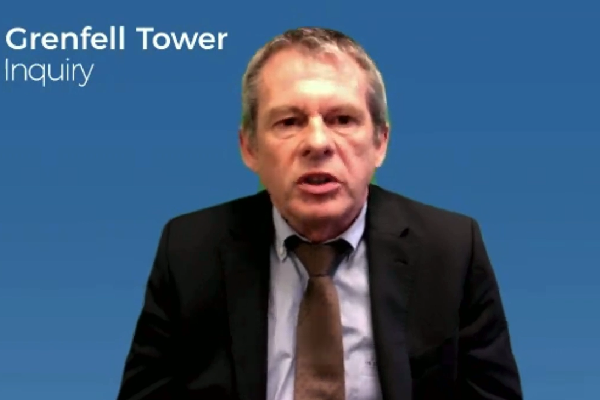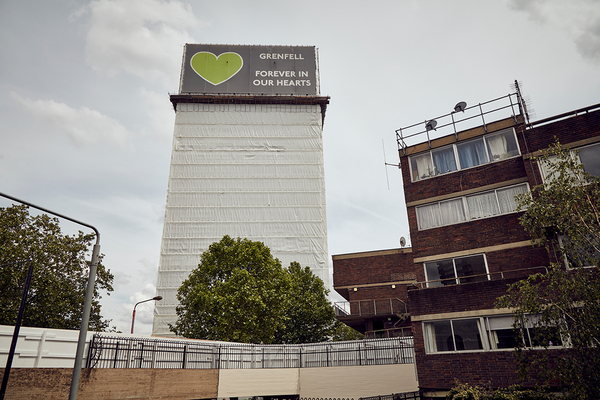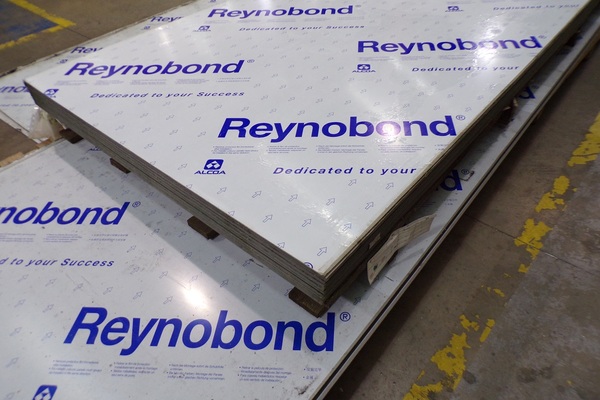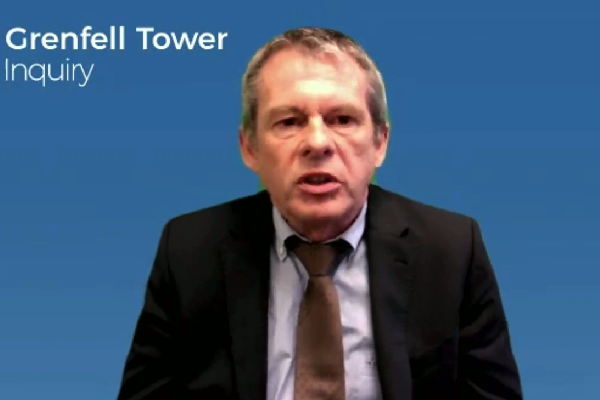Arconic told all French customers to use more fire-safe product a year before Grenfell
The company that sold the highly combustible cladding panels for use on Grenfell Tower told its French salespeople to recommend a more fire-safe product for all buildings from 2016 onwards but did not do the same in the UK, the inquiry heard today.
Vince Meakins, who took over as UK sales manager at Arconic in May 2015, continued his evidence to the inquiry today and was asked about instructions he was given from the company’s headquarters in France relating to sales of the Reynobond PE panels, which have a core of a violently combustible plastic called polyethylene (PE).
The firm offered an alternative fire-retardant (FR) product that contained lower quantities of the plastic and performed substantially better in fire tests as a result. But the inquiry has heard that UK customers had typically tended to buy the cheaper PE version.
The inquiry was shown an email from May 2016 telling French salespeople that the firm was “a knowledgeable entity” and “accepts its responsibility and image as a specialist in this field”.
“In view of the potential calorific benefits of Reynobond FR (vs Reynobond PE)… we have taken the proactive habit of favouring FR as the only solution in our specifications,” the email said.
“As from today, I ask you to go even further and to systematically confirm in writing the requirement for FR for all projects on which a Reynobond specification is involved regardless of the nature and size of the building project.”
By this point, Arconic was aware that the PE version of its product was performing extremely badly in fire tests and that similar products had been involved in major real-world fires in the UAE, France and Australia.
But Mr Meakins said no such instruction was issued to him. “Up until the fire at Grenfell there was nothing said to me in terms of stopping putting forward PE,” he said.
The inquiry also displayed a spreadsheet which showed that by 2017, Arconic had sold 650,000 sq m of the PE-cored cladding products to the UK market since 1998 – enough to cover 91 football pitches. These sales continued into 2017.
Mr Meakins was also shown a brochure, published in December 2016, that became notorious in the aftermath of the Grenfell Tower fire, which advised against using the PE product above 10m.
“As soon as the building is higher than firefighters’ ladders it has to be conceived with an incombustible material,” the document said. It advised against using even the FR-cored panel at a height greater than 33m. Grenfell Tower is 67.3m tall.
It emerged today that this document was published shortly after Arconic developed the ability to manufacture a non-combustible, or ‘A2-rated’, product for the first time. Mr Meakins said he had not previously seen this version of the brochure.
He told the inquiry that he had been instructed to focus his efforts on selling the FR product following a sales meeting shortly after he joined the company in 2015. By this point, the sale of the products for Grenfell Tower had already completed.
Mr Meakins was followed by the opening of Claude Schmidt’s evidence. Mr Schmidt is president of Arconic’s French arm, AAP SAS, and is the only one of four witnesses based in Europe who has agreed to give evidence.
He began his testimony late in the day and was asked only a few questions before the inquiry adjourned, but confirmed that he reported to senior Arconic figures in the company’s US-based parent group and occasionally discussed technical matters with them.
He spoke through a translator and will continue giving evidence for the duration of this week.
The inquiry also learned today that Claude Wehrle, a senior member of Arconic’s technical team who was aware of the tests showing the danger of Reynobond PE, visited the Chalcots Estate in May 2017 because of an issue with the delamination of some of the panels.
He said in his witness statement that he had expressed surprise that so many tall buildings – five towers on the Chalcots Estate were clad with the material – were making use of aluminium composite material with PE, but that he was told by senior figures at contractor Rydon that UK regulations permitted its use. Rydon was also the contractor for Grenfell Tower.
Mr Meakins, who also attended the visit, said he did not recall the exchange. Mr Wehrle is among the Arconic witnesses refusing to give evidence.
Earlier in the day, the inquiry was shown a long email exchange in which a customer of Arconic attempted to get answers about the fire safety credentials of Reynobond PE for a different building project.
Grahame Byrne of Genius Facades came back to Arconic multiple times after getting in contact in November 2015, expressing confusion over answers provided by the company’s then technical manager, Mr Wehrle.
In one answer, Mr Wehrle said only that “both Reynobond PE and Reynobond FR are well classified when tested for spread of flame” in accordance with British standards but that there was a “big difference” between the two products when tested with European standards.
Eventually, following a direct request for Mr Byrne, Mr Wehrle issued a letter stating that both Reynobond PE and FR were classified as Class 0 when tested in accordance with parts six and seven of BS 476 tests.
But the letter added that the two products “are very different in their behaviour when exposed to a flame”, and provided test results showing that Reynobond PE achieved only Euroclass E, with FR achieving the much higher Euroclass B.
Mr Meakins agreed today that Genius Facades had to push “very hard” to get this information from Arconic.
He also told the inquiry that it “should have been quite clearly put to [him] that these two products were completely different, and it wasn’t”.
The inquiry continues with further evidence from Mr Schmidt tomorrow.
Sign up for our weekly Grenfell Inquiry newsletter
Each week we send out a newsletter rounding up the key news from the Grenfell Inquiry, along with the headlines from the week
Already have an account? Click here to manage your newsletters
Sign up for our Retrofit Challenge Virtual Summit
If topics such as those mentioned in the above article are of interest to you, register for our Retrofit Challenge Virtual Summit here.














